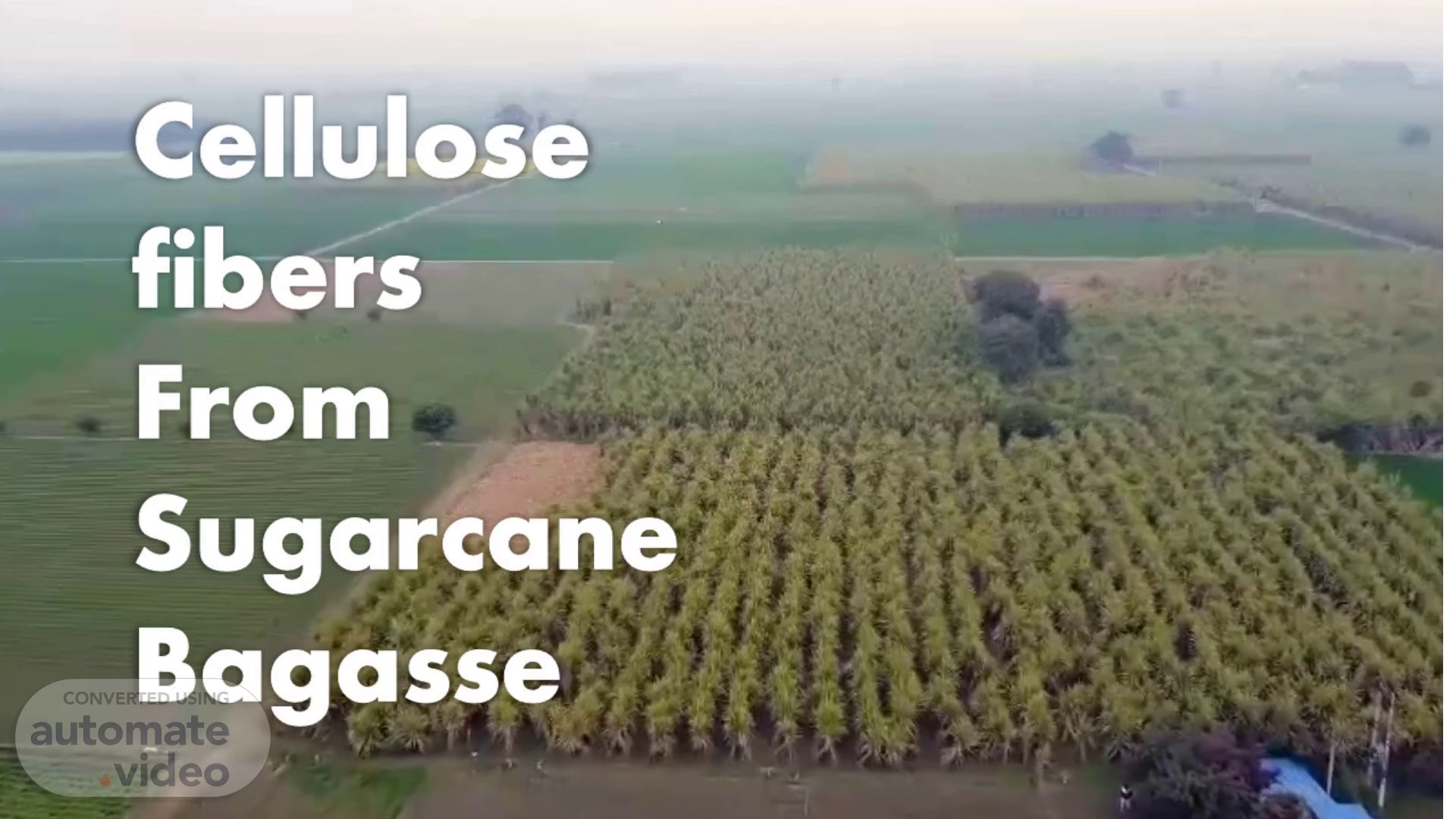
PowerPoint Presentation
Scene 1 (0s)
Cellulose fibers From Sugarcane Bagasse. Sugarcane is the most important crop produce. In India, reported sugar production was 33.7 million tons in 2023/24. Sugarcane bagasse, a byproduct of sugar production, consists of the fibrous residue remaining after juice extraction from sugarcane stalks..
Scene 2 (15s)
India produce an annual output of 75-90 million tones of wet sugarcane bagasse waste, effective waste management strategies are crucial to address the environmental challenges associated with this substantial agricultural residue. Sustainable utilization practices can help mitigate its environmental impact and promote a circular economy approach to waste management..
Scene 3 (32s)
Sugarcane bagasse, a byproduct of sugar production, presents environmental challenges. Improper burning emits pollutants, contributing to air pollution, while inadequate disposal results in water contamination. Studies emphasize its significant impact on the environment and human health...
Scene 4 (1m 2s)
Introduction of Project. The bagasse comprises approximately 50% cellulose and 30% hemicellulose, extractable through our innovative method. This extracted material serves as a sustainable source for producing high-quality cellulosic fibers. These fibers find application in the manufacturing of diverse products, including surgical dressings, sanitary items, and toiletries after compression. Our process not only utilizes the produce bagasse but also reduces waste and minimizes environmental harm, reflecting our commitment to sustainable and eco-friendly solutions..
Scene 5 (1m 26s)
Separation & Soaking. The pith is separated from the rim and soaked in white liquor overnight..
Scene 6 (1m 53s)
The procedure follows the principle of extraction of cellulose and simultaneous removal of lignin. This extraction gives out 95% of cellulose fibers. All the material used in the process is inexpensive and easily available, which makes it cost efficient and easy to perform.
Scene 7 (2m 9s)
Appropriate bulk properties. High absorption capacity.
Scene 8 (2m 22s)
Raw Material: The pith, often overlooked as waste, stands as the primary and easily accessible raw material, contributing to cost-effectiveness..
Scene 9 (2m 45s)
The method efficiently converts sugarcane waste into valuable resources, generating cellulosic fibers. In processes decreasing waste..
Scene 10 (3m 5s)
Working of Prototype. The cellulose fibers, subjected to compression, demonstrated exceptional compressibility. Upon introducing 15 ml of colored liquid, the cellulose fibers exhibited rapid absorption, efficiently soaking up the liquid without leaving any residue. This dual observation underscores both the compressibility and impressive absorbent qualities of the cellulose material in the experimental setup..
Scene 11 (3m 23s)
The cellulose fibers, subjected to compression, demonstrated exceptional compressibility. Upon introducing 15 ml of colored liquid, the cellulose fibers exhibited rapid absorption, efficiently soaking up the liquid without leaving any residue. This dual observation underscores both the compressibility and impressive absorbent qualities of the cellulose material in the experimental setup..
Scene 12 (3m 41s)
Credentials. Aaditi V. Gaikwad – Student (Final Year B. Pharmacy ) Dr. Bhalerao Aparna-M Pharmacy, PhD (Pharmaceutics). 10 years industrial experience. 14 years academic experience.
Scene 13 (3m 53s)
Thank You.